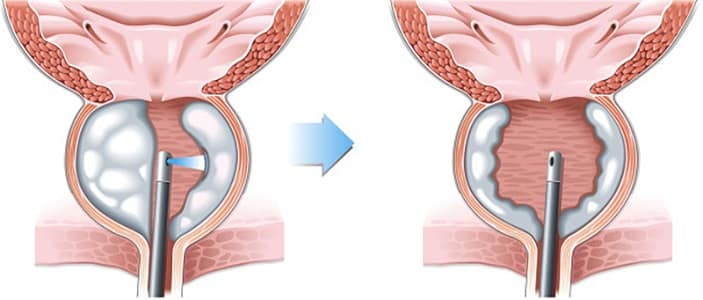Benign prostatic hyperplasia, sometimes known as BPH, is an enlargement of the prostate gland that is not malignant. It interferes with the flow of urine through the urethra. It is in this circumstance that the prostate cells begin to proliferate gradually. The prostate enlarges, exerting pressure on men's urethra as a result. This condition is referred to by numerous names, including enlarged prostate, benign prostatic hyperplasia (BPH), and simply prostate enlargement.
Prostate laser surgery also referred to as (HoLEP), is an invasive treatment that makes use of a laser to eliminate the cells surrounding the prostate. After the extraprostatic tissue has been removed, a Holmium Laser device is utilized to seal the blood arteries, which is done during the treatment. Depending on the size of the glands, the process could take 90 minutes to complete. The following laser surgical procedures are available:
The cost of prostate laser treatment hardly exceeds 1 lakh rupees. Prostate laser surgery in India might be expensive, depending on the laser used, the location of the treatment chamber, the patient's age, and other medical conditions.

There are two forms of prostate enlargement that are distinguished chiefly by how they develop. In the first form, the non-cancerous growth occurs around the urethra, resulting in a significant amount of pressure being placed on the urethra as well as its squeezed condition. As a result, certain prostate enlargement symptoms manifest themselves.
Unlike the first type, the second category has noncancerous development that occurs in the middle-lobe area of the brain. The cells will inevitably proliferate inside the urethra or the bladder's outlet area. This variety is more serious and aggressive, and it may necessitate surgical intervention to treat it.
Post-operatively, patients have an increased desire to urinate more frequently. In addition, blood can be detected in the urine. Patients who notice blood clots when passing urine should contact their doctor right once to get them checked out.
Following the operation, the patient must follow a few precautions, such as drinking plenty of water to flush the bladder, avoiding strenuous physical activity as well as lifting heavy objects, increasing intake of fiber-rich foods such as broccoli, berries, almonds, maize, cauliflower, and so on, and refraining from taking medications until your doctor directs you to do so, among other things.
Q1. How long will it take to recover from prostate laser surgery?
Usually, the recovery period to get back into a normal routine lasts up to a week after which you can start your normal activity and daily rituals. You can even start walking around after the first week. However, the complete healing will take around four to six weeks after your procedure.
Q2. What is the success rate of prostate laser surgery?
Prostate laser surgery has a very high success rate and has been a good alternative and solution for people suffering from prostate issues. It can provide patients with a well-documented solution to their issues and also help them recover from them.
Q3. What should I not do after my prostate surgery?
It is advised that you do not indulge in any strenuous or physical activity for the first month of your procedure. You should avoid any labor activity or stair walking for at least two to four weeks. If needed you can take off from the work for the first week and resume your work thereafter.
Q4. How should I sit after my prostate surgery?
Once you complete your prostate laser surgery you should take some precautions in sitting or posture till your recovery period. You should avoid sitting in an upright position for more than one hour during your recovery period and look to sit on a semi-recumbent position like a reclining chair, or sofa, or sit with a footstool at the bottom for support.
Q5. Can I control my bladder after having prostate surgery?
You may suffer from a slight discomfort or incontinence after your prostate surgery in regards to the bladder and bowel movement. You should look to help build up the pelvic floor muscles with the help of activities like Kegels and more to help with the convenience in the bladder and bowel functioning.